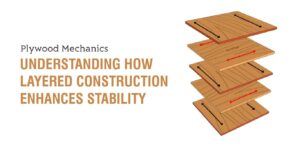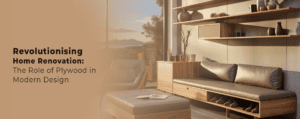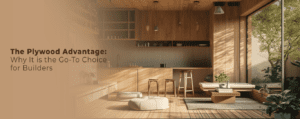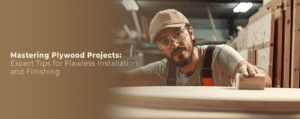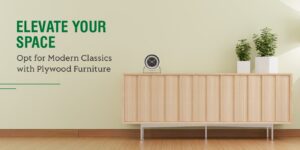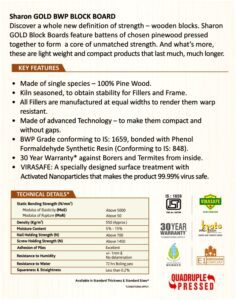

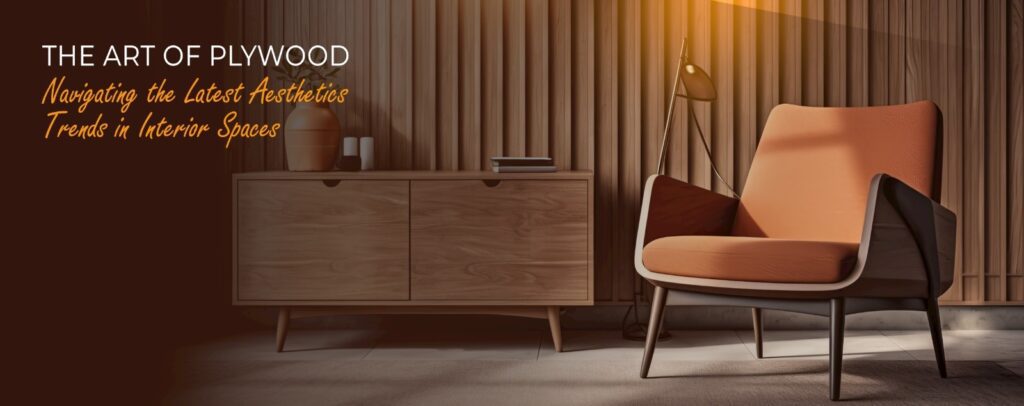

The aesthetics of space are greatly influenced by the materials used in the constantly changing field of interior design. Plywood is one such material that has grown more popular recently. Plywood, which was previously only used for structural support, has come to be seen as a chic and adaptable material that is expanding the possibilities for modern interior design.
Let’s delve into the latest aesthetic trends that showcase the artistry of plywood in transforming interiors.
Plywood’s natural beauty is a major factor in its reincarnation. Plywood displays its inherent grain patterns and textures, in contrast to other materials that frequently need complex treatments to improve their appearance. Plywood’s earthy, warm tones have a timeless appeal, making it a great canvas for various design elements.
Plywood’s genuineness is drawing more and more attention from designers. Whether it’s utilised for flooring, furniture, or wall cladding, the raw and organic feel of plywood brings an element of nature to modern spaces. This return to nature is indicative of a larger trend in society towards sustainability and a need for environments that make people feel rooted and connected to the natural world.
The beauty of plywood is its versatility. Because of its adaptability, designers can play with a wide range of aesthetics, from industrial chic to Scandinavian minimalism. Plywood works well with a variety of colour palettes, giving furniture and other decor pieces a subtle yet eye-catching background.
Particularly made of plywood, furniture has come to represent modern design. The modern lifestyle, which places a high priority on functionality and simplicity, is reflected in the sleek lines and simple aesthetics of plywood furniture. Plywood may be moulded into a wide range of shapes and forms, creating a plethora of creative options for the production of one-of-a-kind, personalised items that suit specific preferences.
Plywood has significantly expanded into architectural applications beyond furnishing and decor. As an architectural treatment, plywood panels are used in both commercial and residential settings. Plywood defies accepted design conventions by adding a dynamic dimension to spaces as a wall covering or ceiling material.
Plywood is a popular material among Architects because of its strength, which makes it perfect for both commercial and residential building projects. Due to its strength and capacity to cover great distances, plywood is a material of choice for creating wide, breezy spaces, which is in line with the current trend of open-concept living and working settings.
Plywood is a sustainable option at a time when environmental concerns are receiving more attention. Plywood is frequently produced from forests that are carefully maintained, in contrast to some other materials that deplete natural resources or cause pollution. Because plywood is easily cut into a variety of forms and sizes without producing extra material, its use also reduces waste.
Plywood’s sustainability aspect is in line with the growing need for environmentally friendly design elements. As a response to customer demands for sustainability, Architects and Interior Designers are progressively integrating sustainability into their projects. Given its environmental credentials, plywood blends in perfectly with this story of conscientious and conscientious design.
Plywood continues to be a reliable option as interior design trends change, demonstrating that timeless pieces always stay in style. Plywood’s adaptability, visual appeal and sustainability have made it a material of choice for Architects and Designers navigating the intricate world of contemporary interior spaces.
Plywood is a monument to the elegance of genuineness and simplicity in a world where the distinction between the natural and artificial is increasingly hazy. The art of plywood reminds us that sometimes the most timeless designs come from the most basic materials, even as we negotiate the newest aesthetic trends in interior design. Plywood continues to make an impression on modern design, whether it’s in the form of a statement piece of furniture, a feature wall, or a whole architectural marvel — proving that elegance can be found in the most unexpected places


